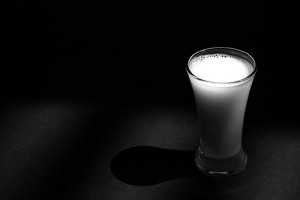 This article might be catering to the more landed of the gentry among us, but no matter what field of design you work in, you will eventually have to take pictures of food. This might be for an advertisement umbrellaed under your firm, or it might just be for a clients promotional materials. Either way, taking quality pictures of products that aren’t built to last long can be quite the challenge. Thankfully, we’ve had some time to think about the process, and we’ve compiled a few thoughts below on how you too can take amazing photographs of food to include in your designs. It’s not a full proof process, but if you use each of the following pointers with a grain of salt and some common sense, you’ll do fine, Pilgrim. Now get to reading just beyond the break!
This article might be catering to the more landed of the gentry among us, but no matter what field of design you work in, you will eventually have to take pictures of food. This might be for an advertisement umbrellaed under your firm, or it might just be for a clients promotional materials. Either way, taking quality pictures of products that aren’t built to last long can be quite the challenge. Thankfully, we’ve had some time to think about the process, and we’ve compiled a few thoughts below on how you too can take amazing photographs of food to include in your designs. It’s not a full proof process, but if you use each of the following pointers with a grain of salt and some common sense, you’ll do fine, Pilgrim. Now get to reading just beyond the break!
- Fake Ice Cubes: If you have to take a picture of a beverage, and we’re thinking you will at some point, it’s a good idea to invest in some fake ice cubes. Using real ice in a shoot can be difficult, as the stuff melts on its own, and does double-time with expensive lights pointed at it. These cubes come in all different shapes, sizes, and lusters, and we guarantee you can find some to match your needs. Just do a quick Google search, add a shipping address, and then reap the rewards!
- Glycerin: If you’re shooting anything that requires that perfectly preserved and drenched in condensation look, you’ll want to buy a lot of this inexpensive compound. The chemical is a thick, sticky paste that can be added to just about anything to give it a singularly lusty glint. If you see a beer advert where the glass looks like it’s just been poured after coming straight from the freezer, what you’re likely seeing is glycerin in use. Again, do a quick Google search to find some (it really is cheap) and then look for a guide on how to use it properly.
- Elmer’s Glue: Milk absolutely fails during a photo shoot. It gets strange after a short amount of time, especially with hot lights around. To compensate for this, a lot of photographers use simple craft glue. It looks like milk, and though it doesn’t smell or taste like it, it’s much easier to handle during a shoot. Best of all, the consumer will never know the difference, as the stuff looks every bit as scrumptious as the real thing!


